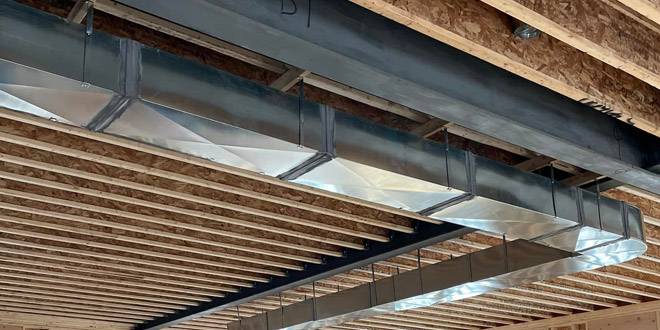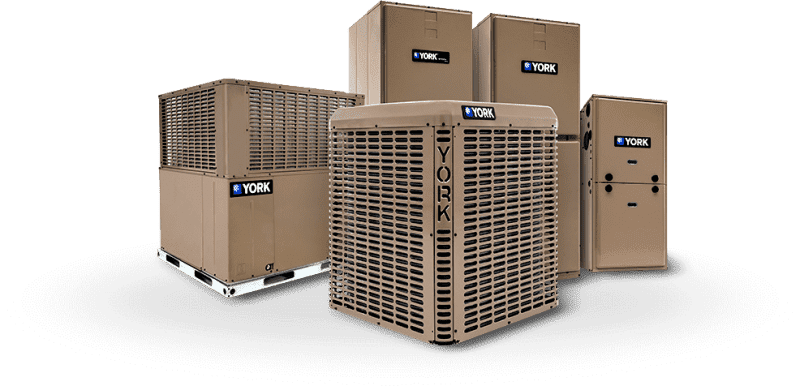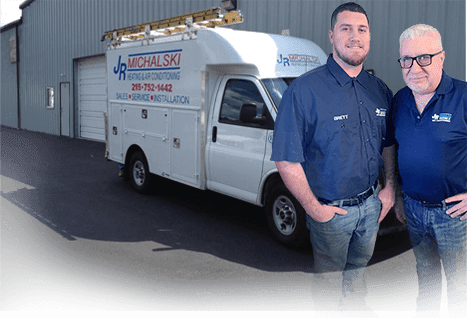
For homeowners and business owners in Langhorne, PA, understanding the essentials of HVAC ductwork and venting is key to ensuring efficient, effective heating and cooling. This guide will delve into the fundamentals, helping you make informed decisions for optimal comfort and energy efficiency.
Understanding HVAC Ductwork in Depth
HVAC ductwork plays a pivotal role in the overall performance of your heating, cooling, and ventilation system. It’s not just about moving air from point A to point B; it’s about doing so efficiently, effectively, and cleanly. Let’s delve deeper into why properly designed and installed HVAC ducts are essential for your home or business in Langhorne, PA.
Efficient Air Distribution
Consistent Comfort: The primary goal of air ducts is to ensure that every room in your building achieves and maintains the desired temperature. Properly designed ductwork achieves this by balancing airflow, preventing hot or cold spots in different areas. This involves calculating the correct duct size for each room, considering its size, usage, and location within the building.
System Balance: Air distribution efficiency also depends on the system’s balance. Dampers, installed within the ducts, can adjust airflow to different parts of the building, ensuring that each area receives the appropriate amount of heated or cooled air.
Energy Efficiency
Minimizing Losses: Energy efficiency in ductwork design is about minimizing losses. Air that leaks from ducts into unconditioned spaces, like attics or crawl spaces, is wasted, leading to unnecessary heating and cooling expenses. Proper sealing of all duct joints and connections is crucial to prevent these losses.
Thermal Insulation: Insulating ductwork is another key factor in preventing energy loss, especially in ducts that pass through unconditioned spaces. Insulation keeps the air within the ducts at the desired temperature, reducing the workload on your HVAC system and thereby lowering energy consumption.
Air Quality

Contaminant Reduction: The quality of indoor air is significantly influenced by the condition of the ductwork. Dust, mold, and other pollutants can accumulate in ducts over time, and if the ductwork is not properly sealed, these contaminants can be distributed throughout your building. Regular cleaning and maintenance of ductwork are essential to prevent the buildup of these pollutants.
Moisture Control: Properly designed ductwork also helps control moisture levels in the air. Excess moisture can lead to mold growth and poor air quality. By ensuring that ducts are properly sealed and insulated, condensation and moisture buildup can be minimized, contributing to a healthier indoor environment.
The Importance of Professional Design and Installation
The complexity of designing an efficient ductwork system cannot be overstated. It requires a thorough understanding of airflow dynamics, load calculations, and the specific needs of the space being conditioned. Professional HVAC technicians, like those at JR Michalski Heating & Air Conditioning, use specialized tools and software to design ductwork systems that meet these criteria. They consider the layout of your building, the type of HVAC system in use, and the unique heating and cooling needs of each space to create a customized ductwork design that optimizes performance and efficiency.
In summary, the ductwork in your HVAC system is much more than just a series of tubes. It’s a carefully designed network that plays a critical role in air distribution, energy efficiency, and air quality within your home or business. Ensuring that your ductwork is properly designed, installed, and maintained is key to achieving a comfortable, efficient, and healthy indoor environment.
Exploring the Different Types of Ductwork
Ductwork is an integral component of any HVAC system, responsible for distributing air throughout your home or business. The efficiency, cost, and suitability of your HVAC system can be significantly influenced by the type of ductwork installed. Understanding the differences between duct types can help you make informed decisions about your heating, cooling, and ventilation needs. Here’s a closer look at the various types of ductwork available:
Flexible Ducts
Composition: Flexible ducts are made from a flexible plastic over a metal wire coil. They are typically insulated with glass wool in the USA or polyester fiber in Europe and covered with a plastic or metalized pet jacket.
Advantages:
Versatility: Their flexibility allows them to fit into spaces where rigid ducts cannot, making them ideal for tricky installations.
Ease of Installation: Lightweight and bendable, they can be installed quickly and easily, reducing labor costs.
Considerations:
Air Flow: Care must be taken to avoid sharp bends that can restrict airflow and reduce system efficiency.
Durability: They can be more susceptible to damage, such as tears or punctures, which can compromise efficiency and air quality.
Rigid Ducts
Rigid ductwork comes in several forms, each with its own set of characteristics:
Sheet Metal Ducts
Composition: These are typically made from galvanized steel or aluminum. They can be rectangular or cylindrical and are often insulated externally.
Advantages:
Durability: Metal ducts are highly durable and less likely to develop mold or be damaged by pests.
Non-Porous: Their non-porous surface reduces the risk of mold growth and allows for easier cleaning.
Considerations:
Condensation: In humid environments, insulation is necessary to prevent condensation on the duct’s exterior.
Fiberglass Lined Ducts
Composition: These ducts have an internal or external fiberglass lining designed to insulate and absorb sound.
Advantages:
Noise Reduction: The fiberglass lining helps to dampen the sound of air moving through the ducts, making them quieter than metal ducts.
Insulation: Provides built-in insulation, which can improve energy efficiency.
Considerations:
Air Quality: Over time, the fiberglass lining can deteriorate and release fibers into the air stream, potentially affecting indoor air quality.
Fiberboard Ducts
Composition: Made from compressed resin bonded fiberglass fibers, these ducts have a dense, foil-faced exterior for moisture and air barrier.
Advantages:
Cost-Effective: Generally cheaper than sheet metal ducts and offer good thermal insulation.
Sound Absorption: The material naturally absorbs sound, reducing the noise of the HVAC system.
Considerations:
Airflow: The rough interior surface can slightly reduce airflow efficiency and collect dust more readily than smooth surfaces.
Choosing the Right Type of Ductwork
Selecting the appropriate ductwork for your HVAC system involves considering factors such as the specific requirements of your space, budget, and desired energy efficiency. Each type of ductwork, like the forced air duct system, has its own set of advantages and considerations, making it crucial to consult with HVAC professionals who can assess your needs and recommend the best option. For instance, JR Michalski Heating & Air Conditioning specializes in providing tailored HVAC solutions, including custom ductwork design and installation, ensuring optimal performance and efficiency for homes and businesses in Langhorne, PA, and surrounding areas.
Venting Basics: Ensuring Safety and Efficiency in HVAC Systems

Venting systems play a crucial role in the safety and efficiency of combustion-based heating systems, such as furnaces, boilers, and water heaters. These systems burn fuel, such as natural gas, oil, or propane, to generate heat, and the combustion process produces exhaust gasses that must be safely expelled from the indoor environment. Understanding the fundamentals of proper venting is essential for maintaining a healthy indoor air quality and ensuring the efficient operation of your heating system.
Prevents Carbon Monoxide Poisoning
Critical Safety Function: The primary purpose of a venting system is to remove combustion byproducts, including carbon monoxide (CO), a colorless, odorless gas that can be deadly if inhaled in large quantities. Proper venting directly channels these harmful gasses from the heating unit to the outdoors, significantly reducing the risk of CO buildup inside your home or business.
CO Detectors: Alongside a well-designed venting system, installing carbon monoxide detectors near sleeping areas and on each level of your home provides an additional layer of safety, alerting you to any potential CO accumulation.
Improves Efficiency
Optimal Air Flow: Efficient venting systems contribute to the overall efficiency of heating systems by maintaining proper air flow. Adequate venting ensures that combustion gasses are quickly and effectively removed, allowing fresh air to be drawn into the system for the next combustion cycle. This process helps the heating system operate smoothly, without the hindrance of gas buildup or oxygen depletion, which could force the system to work harder and use more fuel.
Types of Venting Systems:
Natural Venting: Utilizes the natural buoyancy of hot gasses to rise and exit through a chimney or vent stack. While simple and cost-effective, it’s not suitable for all modern, high-efficiency systems that produce cooler exhaust gasses.
Direct Venting: Employs two pipes for a sealed combustion system—one to bring in fresh air for combustion and another to expel exhaust gasses. This method is highly efficient and safe, as it prevents backdrafting and ensures that all combustion gasses are directly expelled outdoors.
Power Venting: Uses an electrically powered fan or blower to push exhaust gasses out of the vent. This method is versatile and can be used when natural or direct venting is not feasible due to the heating system’s location.
Maintaining Your Venting System
Regular Inspections: Annual inspections by a qualified HVAC technician can identify and address any venting issues, such as blockages, leaks, or corrosion, ensuring the system remains safe and efficient.
Clearances: Keeping the area around vents clear of obstructions, such as furniture, debris, or snow, is essential to maintain proper airflow and prevent the accumulation of hazardous gasses.
Upgrades and Replacements: Older venting systems may not meet current safety standards or be compatible with newer, more efficient heating units. Upgrading to a modern venting system can enhance safety, efficiency, and performance.
A well-designed and maintained venting system is vital for the safe and efficient operation of combustion-based heating systems. It protects against the dangers of carbon monoxide poisoning and ensures that your heating system operates at peak efficiency. Consulting with HVAC professionals, like those at JR Michalski Heating & Air Conditioning, can provide peace of mind, knowing that your venting system is correctly installed, functioning safely, and contributing to the optimal performance of your heating system.
Ready to Optimize Your Comfort? 🏠✨
Elevate your home or business’s heating and cooling efficiency with JR Michalski Heating & Air Conditioning. Our expert team specializes in custom ductwork and venting solutions tailored to your specific needs, along with heating and cooling installation, repair, and maintenance in Langhorne, PA, and beyond. Experience unparalleled comfort and savings with our professional services. Reach out today for a consultation and let us transform your space into a haven of efficiency and comfort.


